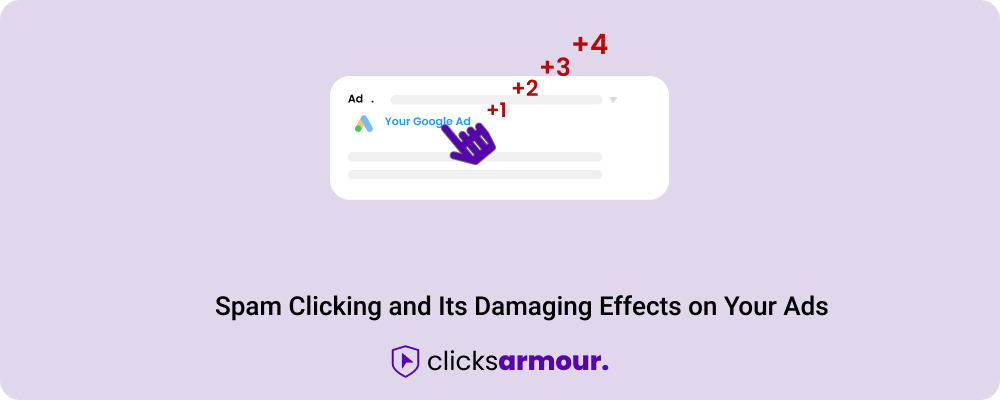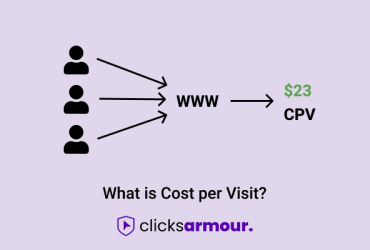You may have heard of click spam and wondered what it is. In short, click spam is when someone artificially clicks on an ad in order to generate losses for the person running the ad.
While this may not seem like a big deal, click spam can actually have a very negative effect on your ads, as well as your business.
Here’s a closer look at click spam and how it can damage your ads.
How Spam Clicking Works
Click spam works by taking advantage of the way that most advertising platforms work. Most advertising platforms, including Google AdWords, use a cost-per-click (CPC) model.
This means that advertisers only pay when someone actually clicks on their ad. Click spam takes advantage of this by artificially clicking on ads in order to generate losses for the person running the ad.
The problem with click spam is that it can quickly eat up an advertiser’s budget without generating any real leads or sales.
In addition, click spam can also cause an advertiser’s ad to be flagged as suspicious or even banned outright from the platform. This can be extremely damaging to a business, especially if that business is relying on online advertising as its primary source of leads and sales.
Just What Effects Can Spam Click Have on Your Site?
Spam clicks ultimately lead to higher advertising expenditures, decreased conversion rates, and skewed user data for marketers. When automated software like bots and scripts engage with an ad, the true effectiveness of the ad cannot be measured.
Users may be persuaded to watch or see commercials even if they have no interest in making the offered purchase, or they may fail to notice the adverts altogether.
Some of the most affected industries include photography, pest control, locksmithing, and plumbing businesses but virtually every industry is at risk.
How to Prevent Click Spam
Fortunately, there are a few steps you can take in order to prevent click spam from happening to your ads.
- The first step is to identify where your clicks are coming from. You can do this by using Google Analytics or another similar tool. Once you know where your clicks are coming from, you can start to look for patterns that might indicate click fraud.
- Look for spikes in your CTRs. If you see sudden increases in your CTRs that don’t correspond with any changes in your ad campaigns, it’s possible that you’re being targeted by click spammers.
- Check the IP addresses of the clicks on your ads. If you see that a large number of clicks are coming from the same IP address, there’s a good chance that they’re fraudulent.
- Look at the time stamps of the clicks on your ads. If you see a pattern of clicks coming at odd hours or from different time zones, that’s another indication of fraud.
- Compare your conversion rates to your CTRs. If you see a huge discrepancy between the two, it’s likely that you’re dealing with click fraud.
- Use Google’s Invalid Clicks Tool to identify and report invalid clicks on your ads. This tool can be found in the “Tools and Analysis” section of your Google AdWords account.
- Use a third-party Fraud Detection tool like ClicksArmour to filter out invalid clicks before they even reach your website.
- Set up filters in Google Analytics to exclude traffic from known fraudsters’ IP addresses. This will help reduce the amount of data being skewed by invalid clicks.
- Disable auto-tagging in Google AdWords so that URL parameters won’t be included in your destination URLs. This will make it more difficult for fraudsters to track your ad campaigns and inflate your CTRs artificially.
- Keep an eye on your PPC campaigns and monitor for any suspicious activity. If you think you may be a victim of click fraud, contact your PPC provider immediately.
Spam Clicking vs. Botnets
Click spamming is the act of artificially inflating the number of clicks on a given advertising link. This can be done by manually clicking on the link multiple times, or by using automated software to generate a large number of clicks.
Botnets are a more sophisticated form of click fraud, in which a network of compromised computers is used to generate fake traffic.
Both methods are used to defraud advertisers, as they end up paying for clicks that are not from real people. Click spamming is less effective than botnets, as it is easier to detect and block.
However, botnets are more difficult to combat, as they often involve hundreds or even thousands of computers. As a result, both click spamming and botnets are major problems for online advertisers.
Conclusion
As a growing industry, the pursuit of clicks and users’ attention has unfortunately attracted a steady stream of unscrupulous participants. While most ad networks provide some kind of security for their advertiser clients, spam click farms have developed clever methods for dodging this safety net.
Click spam is a serious problem that can have damaging effects on your ads and your business. Fortunately, there are steps you can take in order to prevent it from happening to you.
By using an advertising platform with fraud protection and monitoring your ad campaigns closely, you can help ensure that your ads are safe from click-spam attacks.
While there is no silver bullet for completely wiping out spam clicks, taking advantage of the aforementioned measures will protect your advertising money from being wasted on fake clicks.
To maintain ad networks’ pristine state, automated detection methods are being developed with machine learning and complicated algorithms. It’s possible for competitors and bots to click on your adverts and drain your budget.
The anti-fraud and anti-click fraud software from ClicksArmour will safeguard your Google Ads against fraudulent clicks and impressions. All fraudulent advertising visits to your site will be terminated.
It doesn’t matter what system you use, ClicksArmour can accommodate your needs. Whether your site is built on WordPress, Shopify, or Wix, that is not a problem for ClicksArmour. They work flawlessly with any website, whether it was built from scratch or built on one of the many popular platforms.
Contact ClicksArmour today to learn more about fraud and spam click prevention!








